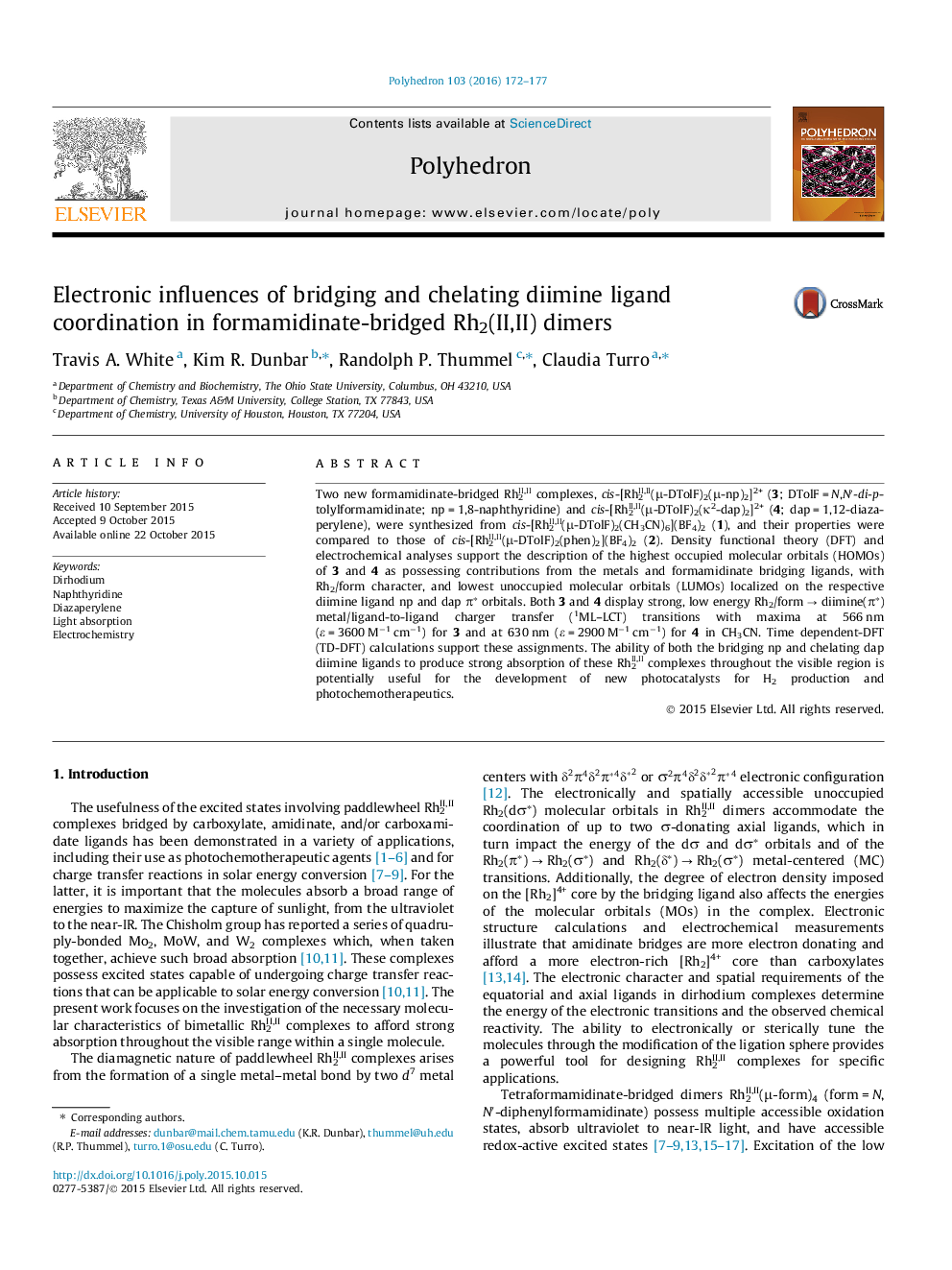| Article ID | Journal | Published Year | Pages | File Type |
|---|---|---|---|---|
| 1335856 | Polyhedron | 2016 | 6 Pages |
Two new formamidinate-bridged Rh2II,II complexes, cis-[Rh2II,II(μ-DTolF)2(μ-np)2]2+ (3; DTolF = N,N′-di-p-tolylformamidinate; np = 1,8-naphthyridine) and cis-[Rh2II,II(μ-DTolF)2(κ2-dap)2]2+ (4; dap = 1,12-diazaperylene), were synthesized from cis-[Rh2II,II(μ-DTolF)2(CH3CN)6](BF4)2 (1), and their properties were compared to those of cis-[Rh2II,II(μ-DTolF)2(phen)2](BF4)2 (2). Density functional theory (DFT) and electrochemical analyses support the description of the highest occupied molecular orbitals (HOMOs) of 3 and 4 as possessing contributions from the metals and formamidinate bridging ligands, with Rh2/form character, and lowest unoccupied molecular orbitals (LUMOs) localized on the respective diimine ligand np and dap π∗ orbitals. Both 3 and 4 display strong, low energy Rh2/form → diimine(π∗) metal/ligand-to-ligand charger transfer (1ML–LCT) transitions with maxima at 566 nm (ε = 3600 M−1 cm−1) for 3 and at 630 nm (ε = 2900 M−1 cm−1) for 4 in CH3CN. Time dependent-DFT (TD-DFT) calculations support these assignments. The ability of both the bridging np and chelating dap diimine ligands to produce strong absorption of these Rh2II,II complexes throughout the visible region is potentially useful for the development of new photocatalysts for H2 production and photochemotherapeutics.
Graphical abstractThe variation of the coordinated diimine ligand between bridging and bidentate chelating modes impacts the light absorbing and electronic properties of formamidinate-bridged Rh2II,II complexes. The two new complexes exhibit broad, strong absorption throughout the UV–visible range which can be useful for the efficient absorption of solar energy.Figure optionsDownload full-size imageDownload as PowerPoint slide
